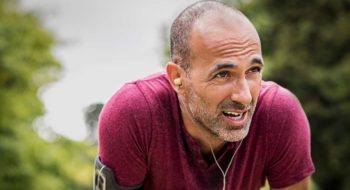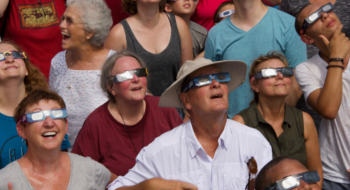Like junior members of Monty Python’s Ministry of Silly Walks, toddlers and young children tend to put one foot in front of the other in unexpected ways as they grow more confident in their locomotion.
For some parents, however, the sight of their child walking around on tiptoe or strolling through the house like a duck can raise concerns that something is wrong.
In the vast majority of cases, there’s little reason for concern, says Dr. William Didelot, a pediatric orthopedic surgeon at Tidelands Health Orthopedics who specializes in the care and treatment of pediatric musculoskeletal conditions, congenital deformities, gait abnormalities, pediatric bone and joint infections and other conditions.
“A lot of kids will walk differently, but it’s normal,” Dr. Didelot says, “especially as they are learning how to walk.”
Progression
Generally speaking, from the time a child takes her first steps until she is about four, she will be developing the motor skills and coordination needed to walk, run and climb stairs. During those years, she’ll alter the way she walks – also known as her gait – as needed to stay on her feet.
That said, there are indicators that a child may be having difficulties walking that merit medical attention, according to Dr. Didelot.
“The red flag warnings for gait are pain while walking, a limp or the condition getting worse and not better,” Dr. Didelot says.
If your child experiences any of these issues, it’s important to speak with your pediatrician or other primary care provider, who can refer you to a specialist like Dr. Didelot if needed.
Closer look needed
Dr. Didelot says there are six common walking issues that can warrant a closer look if they don’t correct themselves by kindergarten:
In-toeing – also known as walking “pigeon-toed” – occurs when a child walks or runs with feet turned inward instead of straight ahead. It can be caused by problems with the hip, knee or foot, but typically resolves itself without surgery or other intervention.
“It can be a normal variation throughout puberty,” Dr. Didelot says. If the condition causes pain, swelling, a limp or any other functional problems, be sure to seek medical care.
Out-toeing – also known as “duck walking” – is when a child’s feet point outward instead of straight ahead when walking or running. “Linemen on a football team tend to be duck walkers, while running backs are often a little pigeon-toed,” Dr. Didelot says.
Bowed legs: Many babies are born with bowed legs, a condition that should start improving by age 2 and be completely resolved by age 4. If that’s not the case, medical intervention may be called for to check for Blount’s disease, a condition that affects the growth plates in the knee.
Knock knees: As the name suggests, this condition causes the knees to knock together when a child runs. It is caused by the femur – the thigh bone – growing crooked at the knee and can be corrected surgically.
Flat feet: 80 percent of 2-year-olds have flat feet, which is when the entire sole of the foot touches the floor when standing. By age 8, 20 percent of people still have the condition. It is typically not a concern unless it causes misalignment in the body and results in other conditions, such as knee and ankle pain. “Flexible flat feet is a normal variation,” Dr. Didelot says. As with other foot and gait issues, pain is a good indicator that a change is needed – possibly in the type of shoe the child is wearing.
Toe walking: Walking on the toes or balls of the feet, referred to as toe walking, is generally not a concern. Most children will outgrow the condition by age 4, but toe walking can be a sign of larger issues such as cerebral palsy, muscular dystrophy or autism. If toe-walking persist past age 4, it may be time to consult a physician.
If you have any concerns with your child’s gait, it’s a good idea to speak with your little one’s primary care provider, Dr. Didelot says. An evaluation can help determine whether there are any issues that merit further attention. In most cases, it just takes time for children to develop the normal walking patterns employed by older children and adults.

Dr. William Didelot
Pediatric Orthopedic Surgeon, Tidelands Health Orthopedics
Call to Schedule
Bio
Dr. William Didelot is a board-certified pediatric orthopedic surgeon who practices at Tidelands Health Orthopedics. He specializes in pediatric orthopedic surgery, as well as the care and treatment of pediatric musculoskeletal conditions, congenital deformities including hip dysplasia and clubfeet, gait abnormalities, pediatric bone and joint infections and other conditions.
Learn MoreMedical Education
Education
Indiana University School of Medicine
Residency
Indiana University
Fellowship
Riley Hospital
Awards
Board Certification:
American Board of Orthopaedic Surgery
Meet the Expert
Dr. William Didelot
Call to Schedule
Dr. William Didelot is a board-certified pediatric orthopedic surgeon who practices at Tidelands Health Orthopedics. He specializes in pediatric orthopedic surgery, as well as the care and treatment of pediatric musculoskeletal conditions, congenital deformities including hip dysplasia and clubfeet, gait abnormalities, pediatric bone and joint infections and other conditions.






